#kader attia
Explore tagged Tumblr posts
Text



'big bang' by kader attia in house of cards: an exhibition of contemporary sculpture in response to chardin - christie's at the rothschild collection at waddesdon manor (2012)
58 notes
·
View notes
Text

Kader Attia, Intifada: The Endless Rhizomes of Revolution (2016)
A forest of leafless trees of iron rebar emerged from piles of rubble, slingshots bound to their bifurcated branches. The makeshift weapons recall those used by Palestinians against Israelis during the First Intifada in 1987, in protest against Israel’s occupation of the West Bank and the Gaza Strip.
“It is an artwork about the history of violence and the agency of resistance as a form of existence, and does not call for violence in any form,” Attia said.
Courtesy: Nagel-Draxler
#human rights#art#humanity#equal rights#freedom#installation#palestine#free palestine#free gaza#kader attia#intifada#revolution#rubble#rebar#no violence#war#anti war#nagel-draxler#art basel
25 notes
·
View notes
Text
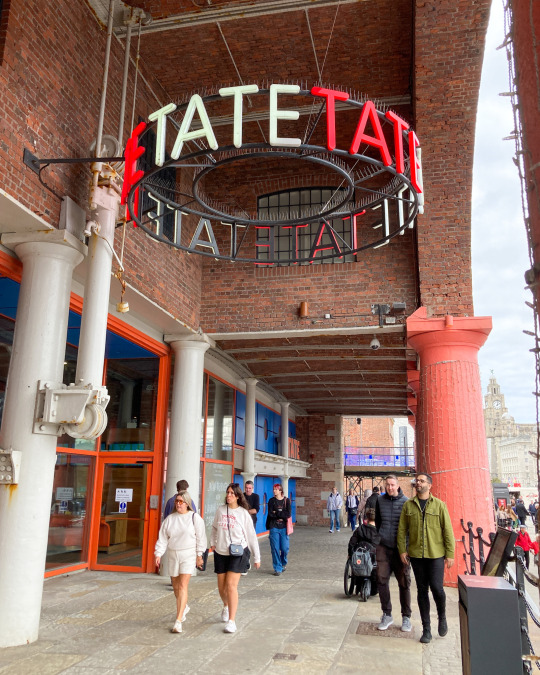
Admission to many museums in the UK are free, so once and a while we drop in to get to see local art. Here are some photos of art with themes of colonization, injustice, and issues of our time at Tate Liverpool.

This photo is of a Palestinian woman in what’s left of her home during the Sabra Camp massacre in 1982. It is by Don McCullin, a British photographer who covered the Lebanese Civil War during his visits in 1976 and 1982. Palestinian refugees fled to Lebanon after the establishment of Israel in 1948 in what was once a part of Palestine. The war in Lebanon led to massacres of Muslim neighborhoods including Palestinians in the Sabra refugee camp.
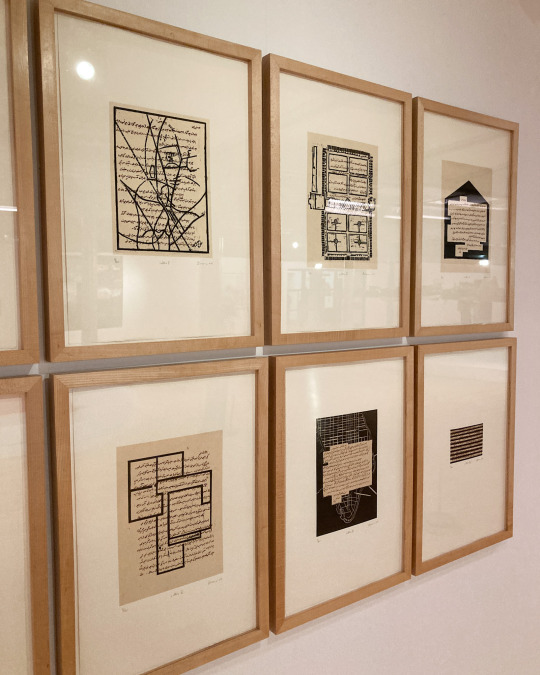
The late Zarina Hashmi was an Indian-American artist born in India, whose family was displaced by the 1947 partition of India after British colonial rule. While her sister Rani moved to Pakistan, Zarina eventually traveled the world, staying in touch with her sister everywhere she went. “Letters from Home” use these letters from Rani as a basis for the art, as they are written in Urdu and printed along with depictions of blue prints and maps of the places Zarina had lived through the years.
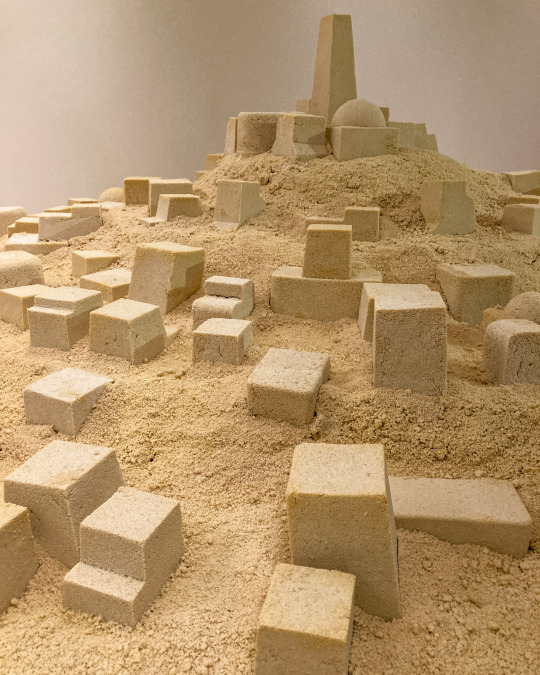
Kader Attia was born in France to Algerian parents, and later grew up in Algeria. Believe it or not, this artwork is made out of food. Specifically, couscous, a staple in Algeria as well as the rest of North Africa. Near the exhibit is a photo of Swiss-French architect Le Corbusier, who applied modernist architecture during the French colonial period in Algeria near the mid 1900s. In this artwork Attia seems to shape buildings in the modernist style, depicting the ancient hilltop city of Ghardaia in Algeria. The buildings are molded in couscous, and cracks and crumbling areas in the buildings could be seen as weathering from both the city’s old age and French colonization.
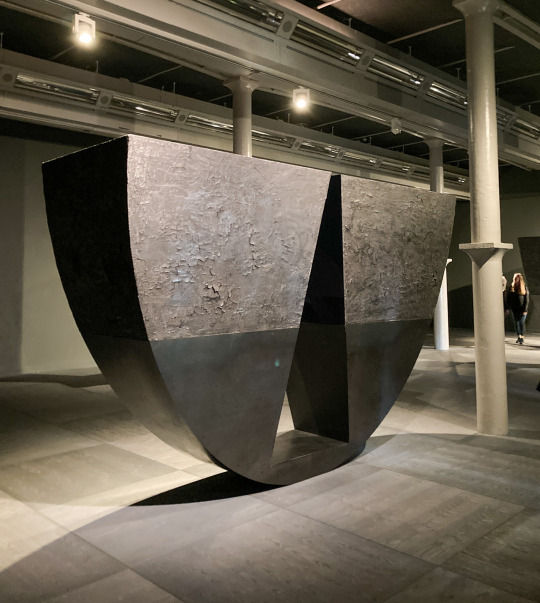
Torkwase Dyson handcrafted these huge, black structures and placed them in a large dark space on the first floor of Tate Liverpool. Dyson’s abstract works “grapple with the ways in which space is perceived, imagined and negotiated particularly by black and brown bodies.” This installation, “Liquid a Place,” definitely displays this, with these huge statues of what seam like heavy slabs of the darkest marble. They definitely convey the weight of colonization for me, and the artist description of them echoing “the curve of a ship’s hull” got me the most. Tate Liverpool sits in what was once one of Europe’s busiest ports serving the Transatlantic Slave Trade.

Lubaina Himid was one of the pioneers of the UK’s Black Art movement in the 1980s. “Carrot Piece” shows a white figure hovering a carrot over a Black woman carrying her own plentiful batch of food and items. The white figure is on a unicycle and wears light make up, conveying ridiculousness or crude entertainment, as if a clown. These are cut-out wooden paintings that are life-sized and was made for, as Himid wrote in her description, “…the moment when you slowly realise that you have learned something quite useful about yourself which proves to be a whole lot better than anything ever offered to you for free.”

Kerry James Marshall is known for his colorful paintings depicting Black people in dark shades. He counters “Western pictorial tradition” and brings forward Black figures in it. This work shows a Black figure wearing a British royal guard uniform, holding a sandwich board advertising a fish and chips restaurant named after a freedman, prominent writer, and British slavery abolitionist Olaudah Equiano. The irony of this art, is that it does not show a place in England. It is a scene in Arizona, where a “London Bridge” was made to attract American tourism.
#Tate Liverpool#Kerry James Marshall#Zarina Hashmi#Don McCullin#Lubaina Himid#Kader Attia#Torkwase Dyson
12 notes
·
View notes
Text
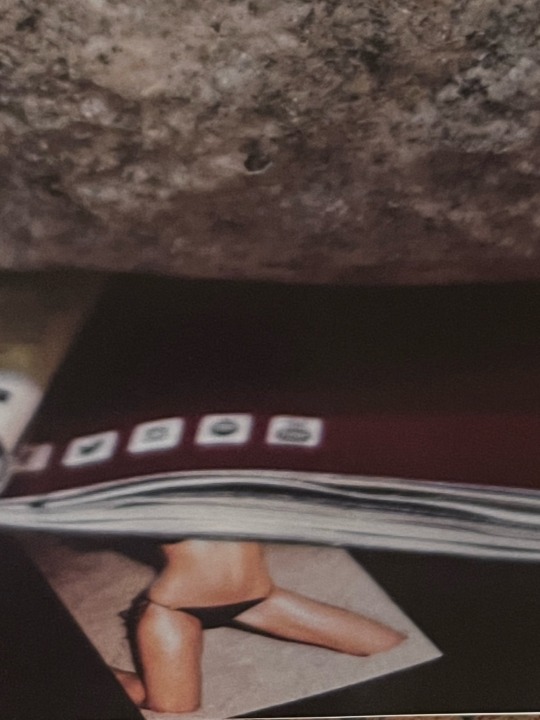


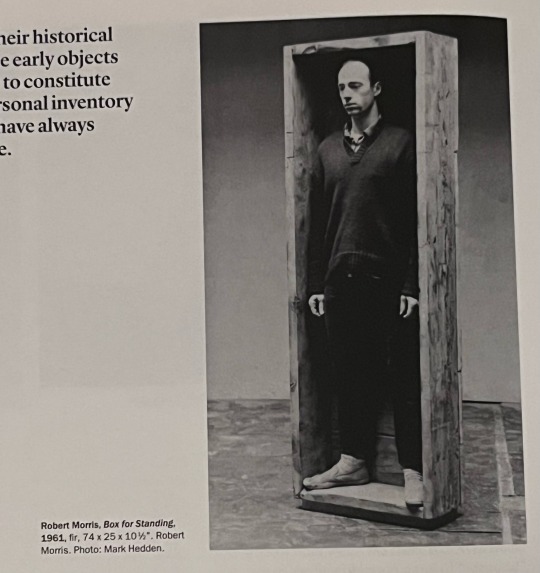






#artforum#francesca woodman#frog king kwok#ai weiwei#kader attia#frank gehry#michael hansmeyer#robert morris
15 notes
·
View notes
Text
Transcending Worries: Embracing the Eternal in Art
Beneath the intricate lattice of shadows in this photograph lies for me a poignant metaphor for the human experience. The web-like structure, with its fractured patterns, reflects the endless maze of worries and problems we weave around ourselves. These concerns, which we so often mistake for the reality of life, are nothing but illusions—impermanent and ever-changing. Like shadows cast by the…

View On WordPress
#Abu Dhabi#art#biennial#connection#flow#illusion#impermanence#installation#kader attia#mindfullness#presence#transcendence#truth#universe#urban river#worry
1 note
·
View note
Text





Wat? J’Accuse (2016) door Kader Attia en Jüngster Tag (1916) door Ludwig Meidner
Waar? Berlinische Galerie, Berlijn
Wanneer? 9 augustus 2024
De Berlinische Galerie in Berlijn bestaat uit twee etages. Beneden zijn tentoonstellingen; boven de vaste collectie. De etages zijn door twee elkaar snijdende trappen met elkaar verbonden, waardoor er midden in de grote ruimte een soort X staat. Een architectonisch fraaie manier om de twee delen van het gebouw met elkaar te verbinden.
Een van de tijdelijke tentoonstellingen is gewijd aan een indrukwekkend kunstwerk van Kader Attia (1970-). Het bestaat uit 17 houten bustes, 8 houtsculpturen en een anti-oorlogsvideofilm van Abel Gance (1889-1981). De titel J’Accuse (Ik klaag aan) is ontleend aan de beroemde open brief die Émile Zola (1840-1902) schreef om de onterecht van verraad beschuldigde kapitein Alfred Dreyfus (1859-1935) te verdedigen.
De bustes tonen zogenaamde ‘gueules cassées’ (gebroken gezichten): soldaten uit de Eerste Wereldoorlog met zware gezichtsverminkingen. Voor J’Accuse werkte de kunstenaar historische foto’s van deze gezichten om tot sculpturen. Hij gebruikte daarvoor Afrikaans hout dat net zo oud is als de afgebeelde soldaten. Daarmee verwijst de kunstenaar naar het feit dat veel soldaten die vochten in de Eerste Wereldoorlog afkomstig waren uit de koloniën. Voor Frankrijk alleen vochten zo’n 440.000 soldaten uit Afrika.
Op een wand wordt ondertussen de film van Gance geprojecteerd.
Terwijl je tussen de sculpturen doorloopt, is de combinatie met beeld en geluid van de film ijzersterk. Het is een indrukwekkend kunstwerk dat in deze tijd, waarin opnieuw een oorlog woedt op het Europese continent, zeer actueel is.
Ook in de vaste collectie van de Berlinische Galerie is de Eerste Wereldoorlog aanwezig. Een indrukwekkend schilderij is Jüngster Tag van Ludwig Meidner. Op deze dag worden de mensen, volgens de Bijbel, door Christus geoordeeld. De verdoemen gaan naar de hel, de zaligen stijgen ten hemel. Bij Meidner is er echter geen sprake van een hemelse rechter. En onder de donkere wolkenhemel lijkt er meer sprake van hel dan van hemel. Dit werk is het laatste deel van de serie ‘Apocalyptische Landschappen’. Daarin roept de kunstenaar, net voor en tijdens de Eerste Wereldoorlog, de dreiging van een catastrofe op,
0 notes
Text









"Kader Attia : descente au Paradis", Montpellier, Mo.Co Hôtel des Collections, 22 June-22 September 2024.
June 21, 2024. Summer solstice.
Went to the vernissage of the expo "Kader Attia : descente au Paradis" at the Mo.Co Hôtel des collections with two of my friends. Because tonight was also the Fête de la musique, the vernissage was rather quiet which, as introverts, we all three appreciated. Afterwards we navigated through the riptides of revellers in the streets in search of a quieter place to have a drink and found a super sweet wine bar.
I've been working a lot this past week, between two jobs and preparing for my end-of-year thesis review, so I'm tired but it was refreshing to see something new and then be able to discuss it with people outside of the work/thesis realms.
#kader attia#contemporary art#art history#phd life#south of france#day in the life#100 days of productivity
1 note
·
View note
Text
@darksilenceinsuburbiareloaded @frenchpsychiatrymuderedmycnut @bko69er @derflaneur









In 2007, Kader Attia created his, perhaps the most famous work, entitled “Ghost”. The installation is a group of people praying (Muslim women are the ones who most often appear on the net), made of foil. Retaining a recognizable shape, the figures are empty inside, that is, devoid of any individuality or spirit.

Ghost
#kader attia#art installation#sculpture#sculptures#sculptor#contemporaryart#statement#alu#fucking favorite
83 notes
·
View notes
Text

Mode d'emploi. Suivre les instructions de l'artiste, Musée d'Art Moderne et Contemporain de Strasbourg (MAMCS), Strasbourg, 2024



Exhibition: October 6, 2024 – February 16, 2025
Authors: Philippe Bettinelli, Clémentine Hébrard, Béatrice Josse, Sara Martinetti, Anna Millers, Hans Ulrich Obrist
Graphic Design: E+K – Élise Gay & Kévin Donnot
Artists: Kader Attia, Alice Aycock, Ismaïl Bahri, Robert Barry, Taysir Batniji, Cathy Berberian, Samuel Bernier, Andreas Bhend, Michel Blazy, George Brecht, Marc Buchy, Daniel Buren, John Cage, Cornelius Cardew, Claire Fontaine, Claude Closky, Grégoire d’Ablon, Latifa Echakhch, Morton Feldman, Esther Ferrer, Alicia Framis, Yona Friedman, Dora García, Felix Gonzalez-Torres, Hans Haacke, Mona Hatoum, James Hennessey, Dick Higgins, Carsten Höller, Fabrice Hyber, IKHÉA©SERVICES, Florence Jung, Kapwani Kiwanga, Alison Knowles, Takehisa Kosugi, Jean-Noël Lafargue, Tarek Lakhrissi, Larva Labs, Joshua Leon, La Monte Young, Louise Lawler, Sol LeWitt, Annea Lockwood, Christian Marclay, Marianne Mispelaëre, Vera Molnár, Claire Morel, Bruce Nauman, Roman Ondák, Pauline Oliveros, Yoko Ono, Nam June Paik, Victor Papanek, Pratchaya Phinthong, Benoît Piéron, Terry Riley, Claude Rutault, Matthieu Saladin, James Saunders, Scratch Orchestra, Mieko Shiomi, Wadada Leo Smith, James Tenney, Rirkrit Tiravanija, Endre Tót, Capucine Vandebrouck, Lawrence Weiner, Ian Wilson, Erwin Wurm
«La conception graphique, assurée par le studio E+K – Élise Gay & Kévin Donnot, utilise des programmes informatiques pour générer chaque exemplaire du livre, rendant chaque copie unique : les graphistes ont en effet programmé une série d’instructions pour chaque œuvre, créant des schémas abstraits permettant d’imaginer une « activation » de chaque œuvre, différente pour chacun des 800 exemplaires imprimés. Chaque copie du livre devient donc une activation du protocole du livre, offrant 800 variations uniques de schémas pour les 50 œuvres présentées.»
#graphic design#typography#art#exhibition#catalogue#catalog#cover#back cover#philippe bettinelli#clémentine hébrard#béatrice josse#sara martinetti#anna millers#hans ulrich obrist#musée d'art moderne et contemporain de strasbourg#2020s
19 notes
·
View notes
Text


https://href.li/?https://www.lehmannmaupin.com/exhibitions/kader-attia-mandy-el-sayegh2/selected-works
5 notes
·
View notes
Text

'on n'emprisonne pas les idées' by kader attia, 2018 in 100 sculptors of tomorrow - kurt beers (2019)
270 notes
·
View notes
Text
The Great Repair
The Great Repair exhibition, which was presented in Akademie der Künste last year in Berlin, is now in Pavilon de'l Arsenal in Paris.
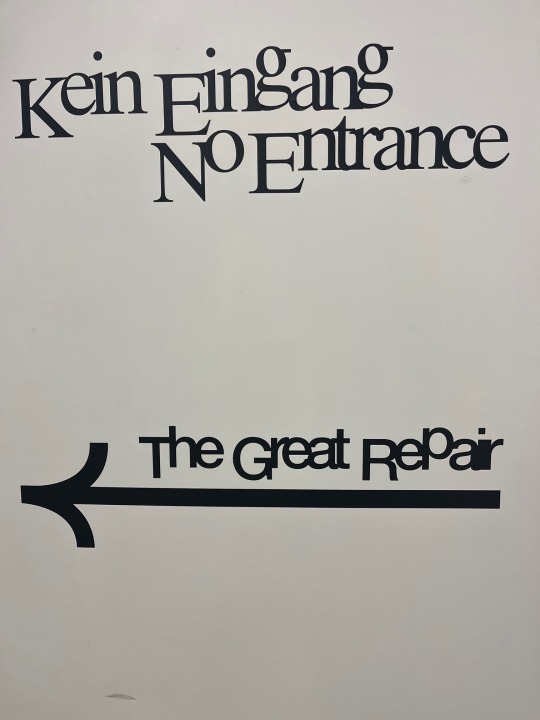
Curators of the exhibition, Florian Hertweck, Christian Hiller, Markus Krieger, Alex Nehmer, Anh-Linh Ngo and Milica Topalović, lean on the statement from the text “Repair and Revolution" by Eva von Redecker: “We face such an enormous need for transformation that it would be downright absurd to disregard the most radical term for change that we have in our political vocabulary. The question is how to fill it with meaning. I understand revolution less as a break and more as an interstitial change, a change that creates the new through and out of the in-between spaces of the old.” This is where repair can begin. Moreover, understanding revolution in this way, as “processes of successive replacement” of “anchor practices,” Eva von Redecker offers an approach to change that is oriented toward practice.

The main staircase leading to the exhibition halls, pictured here before the completion of renovations overseen by Brenne Architekten. Photo: Holger Herschel / © Holger Herschel
What does a great repair in the context of built environment means? According to the authors means to work with the existing, Start with the everyday, Repair the practice / Practice repair, Decolonize knowledge worlds, Tools to the people and Keep the scars visible.
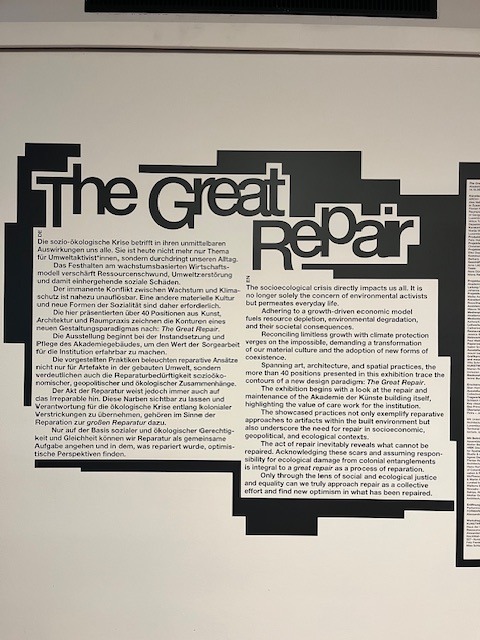
Working with the existing according to the statement does not mean heritage preservation, but responsible care of the built fabric. What matters is recognising the available material artefacts and their ecological and social contexts as a starting point, rather than endorsing a return to the past or embracing them without critical examination. Repair is firmly rooted in an object’s potential use value; it is fundamentally distinct from a mindset of consumption. Engaging with our material legacy also involves a conceptual critique of the discipline—of a conception of architecture that priorities spaces of representation over spaces of reproduction.
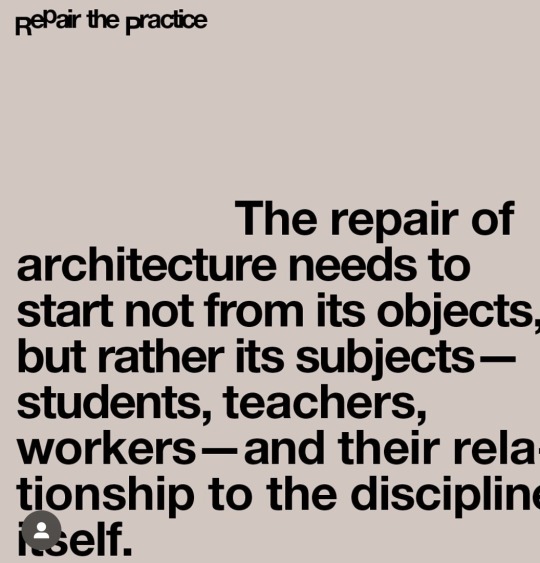
"If we want to “repair” architectural practice with its inherent social inequalities, we need to begin with the discipline’s self-repair," point out the authors and continue "to accomplish this, we must fundamentally reevaluate its working conditions, educational models, hierarchies, and outdated self-understanding—especially the notion that architects should design more and more new buildings."

"The fundamental repair of architectural practice requires the competencies of people who are not usually regarded as experts, as well as types of knowledge that are suppressed, marginalized, and eroded by technocratic, profit-oriented, colonialist dynamics." Such talents, techniques, and traditions of expertise can redesign our relationships within the social and natural environment.
Repair begins with a recognition of what is irreparable due to the irreversible nature of the damage. "We must rebuild, mend, heal, and maintain, but at the same time we must acknowledge that our repair efforts cannot fully erase the material and immaterial harm. Preserving visible scars and our collective memory are therefore integral aspects of the great repair."
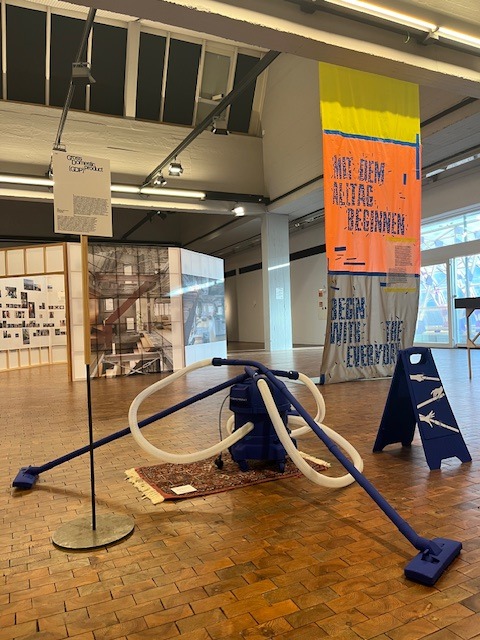

Edit, Gross Domestic Product (GDP), 2019, The feminist collective Edit designed a vacuum cleaner that functions only if three people operate it at the same time. © Edit Collective
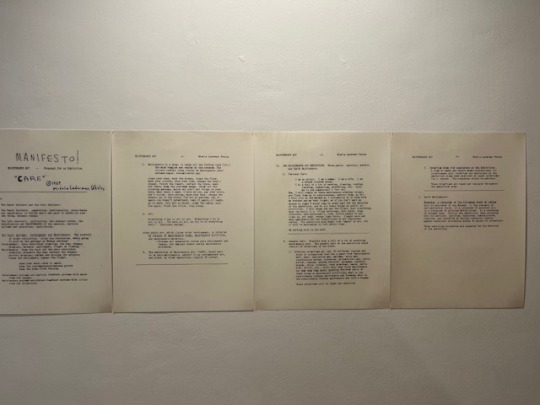
Mierle Laderman Ukeles, Manifesto for Maintenance Art, 1969! Proposal for an Exhibition “CARE”, 1969. © Mierle Laderman Ukeles. Courtesy Mierle Laderman Ukeles & Ronald Feldman Gallery, New York
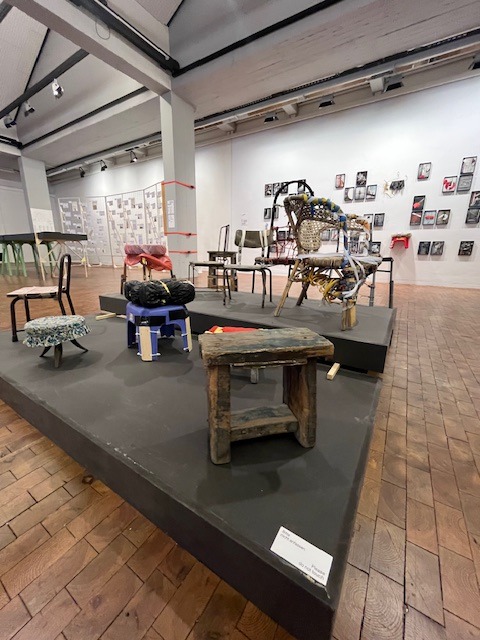
Michael Wolf: from the series Bastard Chairs, 1995–2017. © Estate of Michael Wolf

Kader Attia, Hypomnemata, 2023, Attia argues that the aesthetics of modernism, from architecture to everyday objects like packaging materials, reflect processes of cultural appropriation. © Kader Attia. © VG Bild-Kunst, Bonn 2023
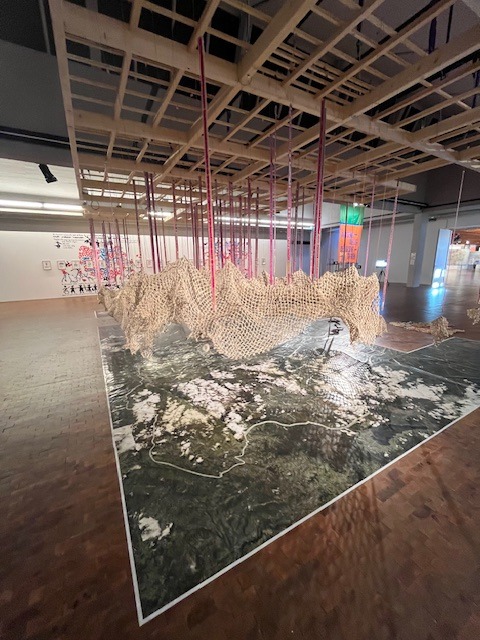
Starting in April 2023, Inga representatives from across Colombia collectively wove a three-dimensional cartography of their territory over several months. During the inaugural workshop, which took place at Muskui Wasi (House of Dreams), a meeting space in Mocoa, Putumayo, weavers and researchers agreed on how to integrate materials and techniques from different Inga regions. In the picture below, Taita Hernando Chindoy, leader of the Inga People of Colombia, points out current challenges facing Inga territories. Above, John Jairo Jansasoy and Luzdary Santacruz examine their community in Aponte in an aerial photo. © Ñambi Rimai
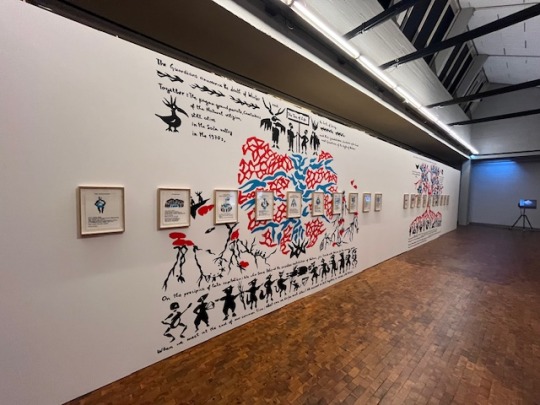
Marjetica Potrč, The Time of Humans on the Soča River, 2021 The drawing tells the story of a world marred by the exploitation of natural resources, highlighting humanity's urgent transformation from perceiving itself as the owner of nature to assuming the role of its caretaker. © Marjetica Potrč. Courtesy Marjetica Potrč & Galerie Nordenhake Berlin, Stockholm, Mexico City
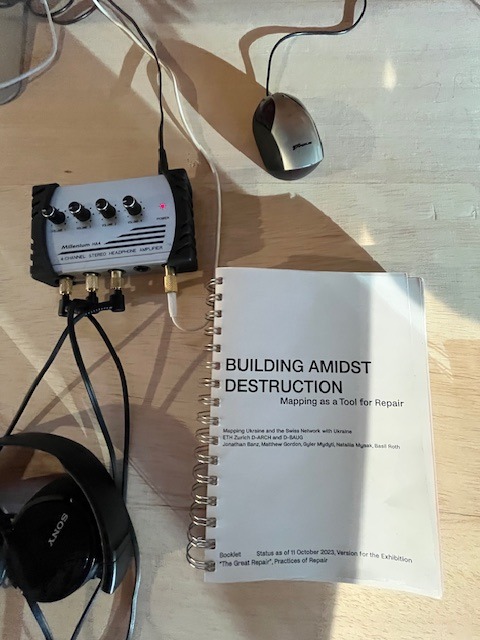
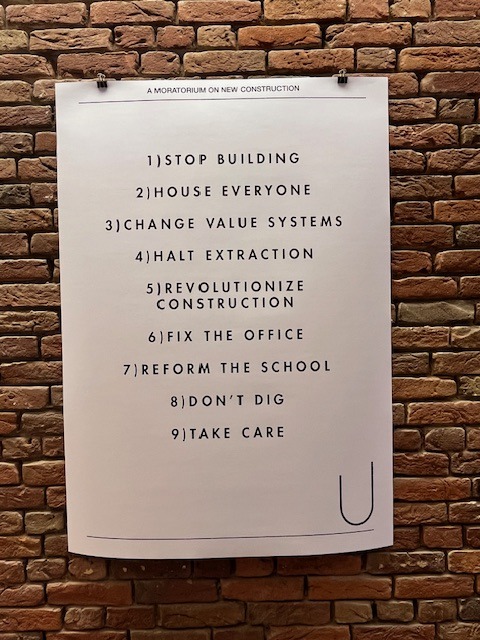
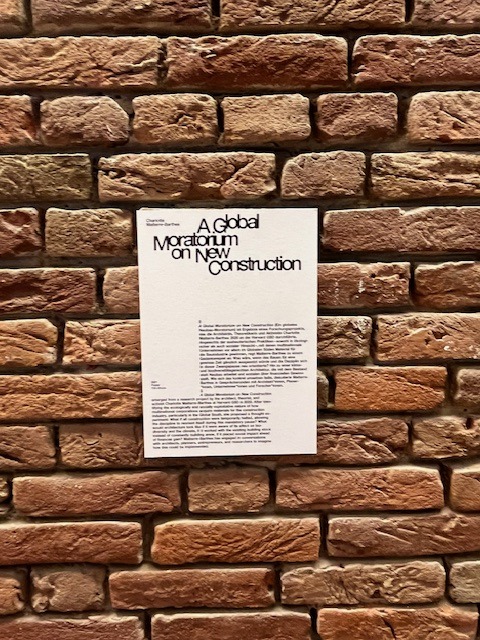


Cart is a fully functional cargo bike created from salvaged car parts as part of the series Cars into Bicycles. It also pays homage to the triciclos de tamales, mobile retail shops widely used by street vendors in Mexico. Folke Köbberling, Martin Kaltwasser. © VG Bild- Kunst, Bonn 2023
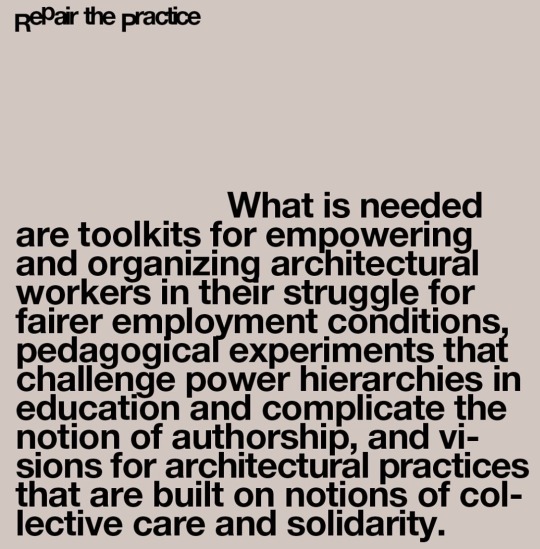
4 notes
·
View notes
Text
Rust Never Sleeps

Antoine Puisais
::

Benjamin Everett
::

Iida Miidam
::

David Hockney
::

Frank Lloyd Wright - Saguaro Forms and Cactus Flowers, Rug
::
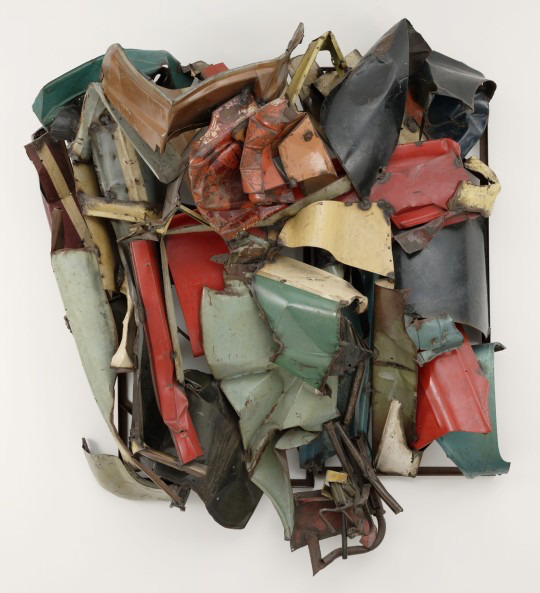
John Chamberlain - Essex
::

Jose Davila
::
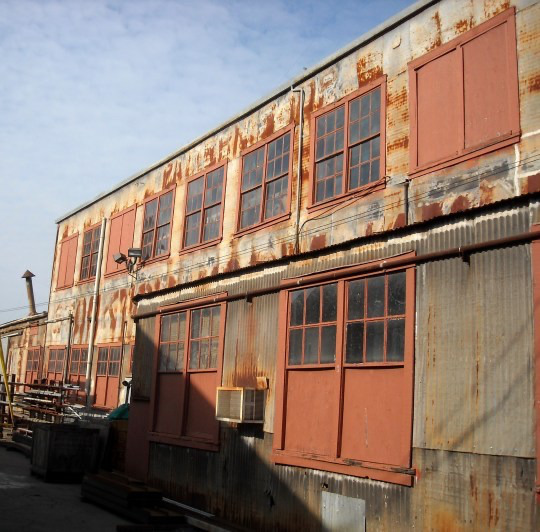
Art of Rust
::

Jose Luis Cremades
::

Joaquín Torres Garcia - Object with Number 1, 1932
::

Kader Attia - Self-Destruction
::
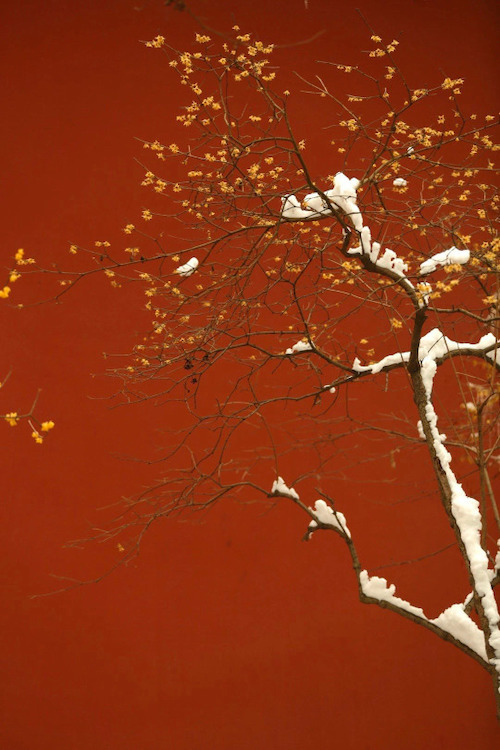
unknown
::

Uturinntakayuki
::
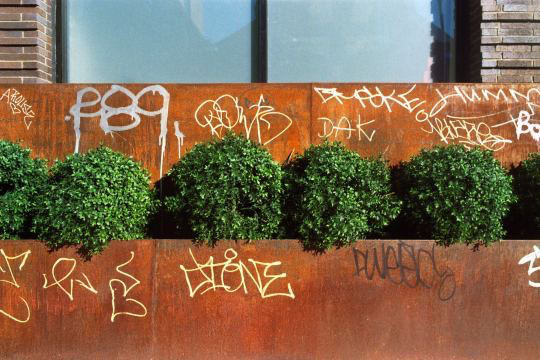
Tom Scola
::

Robert Rauschenberg
::
Sunday: this old house
4 notes
·
View notes
Text



'big bang' by kader attia in house of cards: an exhibition of contemporary sculpture in response to chardin - christie's at the rothschild collection at waddesdon manor (2012)
0 notes
Text
Descente au Paradis – Kader Attia au MO.CO
0 notes
Text

Sculpture de Kader Attia, Mirrors and Masks, 2023
0 notes